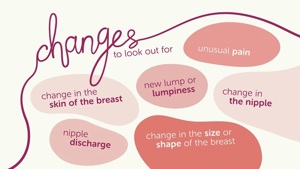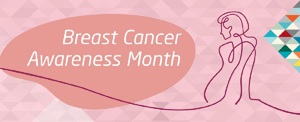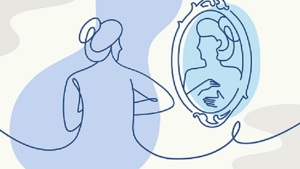Multimedia News Release: All women are different, but breast awareness is the same for all
Press release September 27, 2018 Cancer Australia BreastA national survey suggesting that only three in 10 women can accurately name three or more breast cancer symptoms has led to a call from Cancer Australia for women of all ages to be breast aware.

Breast cancer is expected to be Australia’s most commonly diagnosed cancer in 2018, and it is forecast that over 18,000 women and around 150 men will be diagnosed with the disease this year in Australia.
For high-res images, please visit the Multimedia News Release:
Youtube: http://news.medianet.com.au/cancer-australia/all-women-different-breast-awareness
At the beginning of Breast Cancer Awareness Month, Cancer Australia is releasing a short video titled Find it early and survive, to ensure that women have the information they need to find breast cancer early.
Associate Professor Christine Giles, Acting CEO, Cancer Australia, said that the video provided important reminders for women to know their own breasts and what is normal for them, to know the symptoms of breast cancer, and to attend mammographic screening if they are aged 50 and over.
Changes to look out for include a new lump or lumpiness, a change in size or shape of the breast, a change to the nipple such as crusting, ulcer, redness or inversion, a nipple discharge, or an unusual pain that doesn’t go away.
“Should you notice a change that is unusual for you, regardless of your age, it is important you see a GP without delay,” said Associate Professor Giles.
The survey also found that two out of three women believe that you need to use a special technique to check your breasts, however the evidence has shown this is not the case.
“You don’t need to be an expert or use a special technique to check your breasts,” said Associate Professor Giles.
“Knowing the normal look and feel of your breasts through everyday activities, such as showering, dressing and looking in the mirror, will help you to notice any changes that are new for you.”
In an encouraging finding, the survey showed that, overall, across all age groups, women were aware that younger women can develop breast cancer.
“Every day in Australia, two women under 40 are diagnosed with breast cancer, and it is the most commonly diagnosed cancer amongst females aged 20-39. The best way for younger women to find breast cancer early is through breast awareness,” said Associate Professor Giles.
Cancer Australia is also reminding doctors of the importance of using the triple test to assess all women with a new breast symptom, no matter their age. Cancer Australia’s resource Investigation of a new breast symptom: a guide for General Practitioners details the steps to undertake the triple test.
“The triple test approach is the most effective and accurate way to diagnose breast cancer in women who have breast symptoms. When performed appropriately, the triple test will detect over 99.6% of breast cancers,” said Associate Professor Giles.
Women are encouraged to share the video Find it early and survive on social media.
Visit canceraustralia.gov.au
Cancer Australia was established by the Australian Government in 2006 to benefit all Australians affected by cancer, and their families and carers. Cancer Australia aims to reduce the impact of cancer, address disparities and improve outcomes for people affected by cancer by leading and coordinating national, evidence-based interventions across
Subjects
Cancer Australia Breast

 Follow
Follow


